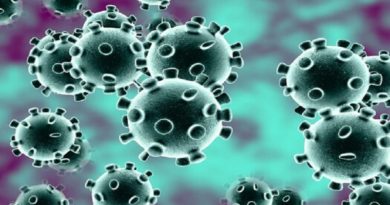How WHO, others reduce Neglected Tropical Diseases in 5 years
The mass drug administration and the intensified disease management were the two approaches attributed for the decreased in the number of people in need of Neglected Tropical Diseases (NTDs) treatments from two billion in 2010 to 1.6 billion in 2015.
Due to this achievement in the past five years, the World Health Organization (WHO), donors, non-governmental organizations and government representatives of endemic countries are meeting in Geneva, Switzerland to build on the gains that have been made and reaffirm their commitment to the fight against Neglected Tropical Diseases (NTDs).
Since the London Declaration five years ago, which crystallized the international commitment to fight against 10 NTDs, tremendous progress has been made in reducing the burden of these diseases. Globally, nearly a billion people received treatment for at least one NTD in 2015, 36% more than just four years before. The number of people in need of NTD treatments decreased from 2 billion in 2010 to 1.6 billion in 2015. Two highly effective approaches, mass drug administration (MDA) and intensified disease management (IDM), have made this possible.
In the African Region which alone bears 40% of the population suffering from NTDs, great strides have been made in the past years. Togo has just eliminated Lymphatic Filariasis as a public health problem. Ethiopia has made significant strides in the fight against Trachoma by setting targets in its national health plan and increasing domestic funding to 3 million US dollars as at 2016. The Democratic Republic of Congo (DRC) is now funding 25% of NTD programs, up from 0% in 2011.
In collaboration with partners, WHO launched the Expanded Special Project for Elimination of NTDs (ESPEN) less than a year ago, to significantly cut the burden of the five PC-NTDs in Africa by sharing best practices, coordinating activities and offering technical guidance.
Conscious that with 47 African countries endemic to at least one of the ten London Declaration NTDs, it is critical to have a complete map of the disease burden in order to accelerate the control and elimination of NTDs in the African Region. Dr. Matshidiso Moeti, the WHO Regional Director for Africa, announced this week the launch of the AFRO NTD Portal. Through this portal, Health Ministries and stakeholders can share data to support public health action. “As scaling up mass drug administration for the over 600 million people who need preventive chemotherapy remains one of the biggest challenges in the region, this NTD portal illustrates WHO AFRO’s bold ambitious to take focused and unwavering action” said Dr. Moeti.
An intensive and large scale mapping exercise to accurately record the prevalence of NTDs has been carried out as 37 African countries are co-endemic for at least five of these diseases. With support from the Bill & Melinda Gates Foundation, the project aimed to complete the mapping of four diseases – Lymphatic Filariasis, Onchocerciasis, Soil-Transmitted Helminths and Schistosomiasis. This project known as Shrinking the Map, involved (i) field surveys, (ii) developing high-quality maps and relevant profiles on disease and programme performance, and (iii) making the maps available to the public to support programmatic decision making.
Furthermore, in an effort to accurately map the prevalence of trachoma, the world’s leading infectious cause of blindness, the Global Trachoma Mapping Project (GTMP), supported by DFID and USAID has carried out the largest trachoma disease mapping in history. The mapping of Onchocerciasis, however, remains an urgent need for the African region.
“Neglected Tropical Diseases (NTD) programmes harness diverse partnerships to drive impact – including across sectors, and countries. With communities and entire nations struggling under the burden of these diseases, increased financial support, stronger political commitment and better tools to prevent, diagnose and treat the diseases are vital to defeat NTDs. The window of opportunity to achieve the 2020 targets is right in front of us, and we cannot let it close. The success so far shows what can be done if we work together,” said Dr Matshidiso Moeti.
Neglected Tropical Diseases are preventable infectious diseases that kill 534,000 people annually. Worldwide, over 1 billion people, including 500 million children, remain at risk. Impoverished communities are disproportionally targeted; perpetuating a cycle of marginalization and stunted economic growth. Some of the most rampant NTDs include Lymphatic Filariasis, Onchocerciasis, Schistosomiasis, Soil-Transmitted Helminthiasis and Trachoma. However, these five diseases can all be treated with Preventative Chemotherapy (PC). The treatment costs less than $1 per person, and the implementation of mass drug administration has cured millions thus far.
The Expanded Special Project for Elimination of Neglected Tropical Diseases (ESPEN) provides African countries with technical assistance to accelerate the control and elimination of the five Neglected Tropical Diseases amenable to Preventive Chemotherapy (PC-NTDs): Onchocerciasis, Lymphatic Filariasis, Schistosomiasis, Soil Transmitted Helminthiasis and Trachoma. ESPEN is a five-year project nested within the World Health Organization’s Regional Office for Africa (WHO AFRO) and is inspired by the World Health Organization’s 2020 Roadmap on NTDs.



